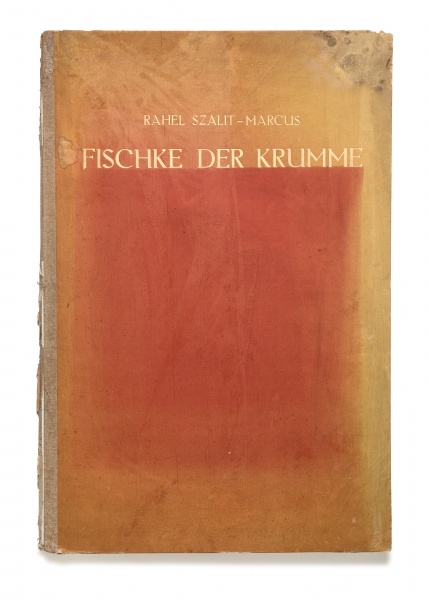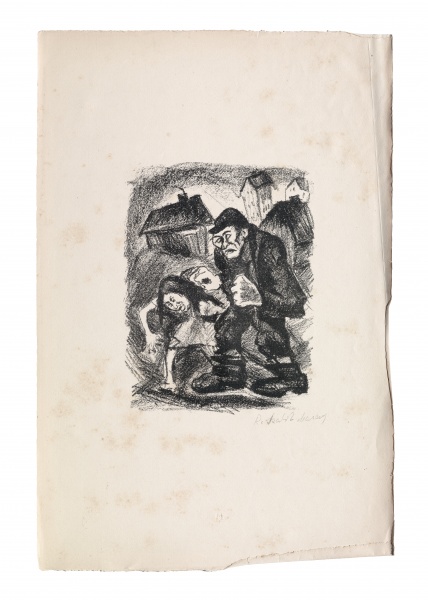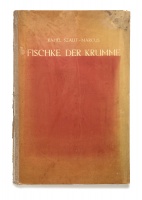

Fischke der Κrumme (Fishke the Lame)
| Author: |
Rahel Szalit-Marcus (1888–1942)  |
| Created: | 1922 |
| Material: | paper |
| Technique: | litograph |
| Dimensions: | 53 × 35 cm |
Charity. The Torah lists 613 mitzvahs, or commandments, which every believer must follow. Charity (in Hebrew tzedakah) is one of the most important: ‘There will always be poor people in the land. Therefore, I command you to be openhanded toward your fellow Israelites who are poor and needy in your land’ (Deuteronomy 15:11). Charity in Judaism is perceived as a religious and ethical obligation, and various mutual aid fraternities and organisations have always been active in Jewish communities.
Every shtetl in Lita had not only its own rabbi and shochet, or ritual butcher, but also its own beggars, who regularly collected donations from people and went to designated houses for dinner on the Sabbath. The life and wanderings of the lame beggar Fishke, his marriage to a blind woman, his love for a hunchback, hierarchical relationships, and cruelty among beggars, are the subject of the novel Fishke the Lame by the writer Mendele Mocher Sforim (Mendele the Book Peddler, the pseudonym of Shalom Broide-Abramovich, 1835–1917). The novel was published in Yiddish in Odesa in 1888 (an abridged version was published in Zhytomyr in 1869). Sforim started writing novels in Yiddish in order to show that Yiddish, and not just Hebrew, could be suitable for literature, contrary to popular opinion at the time. It was the first novel to describe nature in Yiddish, and was based on true stories. The writer wandered around Lithuania, Volhynia and Podolia in Ukraine, and elsewhere in 1854, together with the lame beggar Abraham. The novel was translated into various languages, went through many editions, and was illustrated several times.
Rahel Szalit-Marcus, a painter and graphic artist who was born in Telšiai, lived in Berlin until 1933, when the National Socialists seized power. Forced to abandon her studio and her friends, she fled the country, eventually finding refuge in Paris. While still in Germany, she had become known for her graphic works, which often exuded a highly evocative, sombre, and at times even eerie, quality, echoing the style of German Expressionism. Szalit-Marcus created a series of lithographs illustrating the works of famous authors, such as Fyodor Dostoyevsky, Sholom Aleichem, Charles Dickens and Heinrich Heine. In 1920 she produced the series of 16 lithographs Fischke der krumme, based on the novel of the same name by Mendele Mocher Sforim, which she published in Berlin in an edition of 100 copies. The lithographs were accompanied by an introduction by the historian and translator Julius Elias, as well as explanations of the illustrations. All the copies published in Berlin were numbered, and the Ellex Valiunas collection has number 62, which includes 14 lithographs.
Text author Vilma Gradinskaitė
Source: Law firm Valiunas Ellex art album STORIES OF LITVAK ART (2023). Compiler and author Vilma Gradinskaitė







